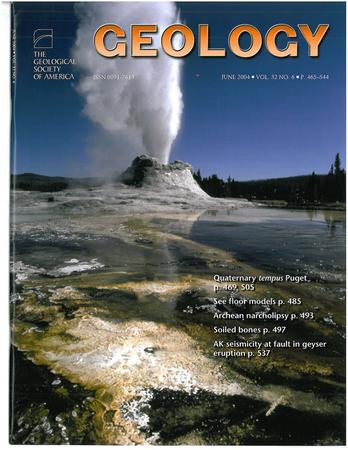大巴哈马滩的沉积物收支——地球上最大的现代碳酸盐台地
IF 4.6
1区 地球科学
Q1 GEOLOGY
引用次数: 0
摘要
结合遥感、野外采样和地震数据,对大巴哈马滩(GBB)沉积物收支进行了广义量化。这个孤立的碳酸盐台地在现代世界是独一无二的,因为它的巨大尺寸和丰富的非骨骼沉积物,使它成为地质历史上巨大台地的模拟物。以前的研究只关注预算的单个方面,如沉积物生产、出口或积累,而我们将这三个方面都协调起来。我们认为,GBB每年产生0.93−7.81 × 1013 g沉积物,出口0.74−8.79 × 1013 g,积累2.24−57.31 × 1013 g。岩心和地震数据证实,自6.7万年前洪水以来,GBB一直在追踪海平面的上升,这至少需要一个平衡的预算。要做到这一点,我们认为GBB顶部的沉积物生产者必须达到或接近其现代最大产能。因此,我们的研究挑战了非珊瑚礁平台严重过量产生沉积物的观念。全新世GBB的预算显然比以前认为的更加不稳定,如果受到气候变化的阻碍,可能无法追踪未来的海平面上升。本文章由计算机程序翻译,如有差异,请以英文原文为准。
The sediment budget of Great Bahama Bank—Earth’s largest modern carbonate platform
Melding remote sensing, field sampling, and seismic data, we broadly quantify the sediment budget of Great Bahama Bank (GBB). This isolated carbonate platform is unique in the modern world because of its immense size and its abundance of non-skeletal sediments, making it an analog for the giant platforms of the geologic past. Whereas previous studies focused on singular aspects of the budget, such as sediment production, export, or accumulation, we reconcile all three. We contend that annually, GBB produces 0.93−7.81 × 1013 g of sediment, exports 0.74−8.79 × 1013 g, and accumulates 2.24−57.31 × 1013 g. Cores and seismic data confirm that GBB has tracked rising sea level since flooding 6.7 k.y. ago, necessitating, at minimum and on average, a balanced budget. To perform as such, we contend that the sediment producers atop GBB must have produced at, or near, their maximum modern-day capacity. Our study therefore challenges the notion that non-reefal platforms grossly overproduce sediment. The budget of the Holocene GBB is apparently more precariously balanced than previously thought and may conceivably fail to track future sea-level rise if impeded by changing climate.
求助全文
通过发布文献求助,成功后即可免费获取论文全文。
去求助
来源期刊

Geology
地学-地质学
CiteScore
10.00
自引率
3.40%
发文量
228
审稿时长
6.2 months
期刊介绍:
Published since 1973, Geology features rapid publication of about 23 refereed short (four-page) papers each month. Articles cover all earth-science disciplines and include new investigations and provocative topics. Professional geologists and university-level students in the earth sciences use this widely read journal to keep up with scientific research trends. The online forum section facilitates author-reader dialog. Includes color and occasional large-format illustrations on oversized loose inserts.
 求助内容:
求助内容: 应助结果提醒方式:
应助结果提醒方式:


